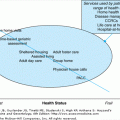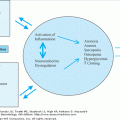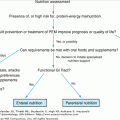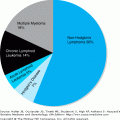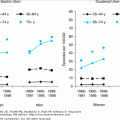Management of Agitation in Dementia: Introduction
Dementia affects at least 10% of patients older than 60 years and more than a third of patients older than 80 years. It is estimated that, by the year 2030, 14 million Americans will have Alzheimer’s disease (AD), the most common disease underlying late-life dementia and the leading cause of nursing home placement in the elderly.
Neuropsychiatric behavioral symptoms are frequent in patients with dementia. It is estimated that between 61% and 92% of patients with AD will develop disruptive agitation during the course of their illness. Agitation is characterized by excessive verbal and motor behaviors, which suggest that the patient is distressed. Disruptive agitation includes such behaviors as hitting, biting, screaming, constant requests for attention, repetitive vocalizations, verbal threats, and forced motor activity like pacing. In 20% to 30% of cases, agitation is accompanied by psychotic symptoms such as hallucinations and delusions.
Agitation adversely affects quality of life for both the patient and the caregiver. More than 70% of caregivers consider the management of disruptive agitated behaviors to be the most challenging aspect of the caretaking process. Along with sleep disturbances, it is the major precipitant of institutionalization. In the nursing home setting, the management of agitation requires a high caretaker-to-patient ratio, further increasing the public health burden of this costly disease, which is presently estimated at $100 billion per year.
Pathophysiology
The effects of AD on brain function and a number of neurotransmitters may contribute to the pathophysiology of neuropsychiatric behavioral symptoms in AD. In a fluorodeoxyglucose-positron emission tomography study mapping psychosis in AD, hypometabolism in the right prefrontal cortex was associated with delusions. Single photon emission computed tomography studies in patients with AD, with aggressive behaviors, demonstrated abnormalities in the right anterior medial temporal region.
Changes in a number of neurotransmitter systems likely contribute to the pathophysiology of agitation in AD. There is severe loss of cholinergic neurons in the basal forebrain nucleus basalis of Meynert and reductions in choline acetyltransferase (the synthetic enzyme for acetylcholine with a corresponding cholinergic deficit). In large clinical trials of acetylcholinesterase inhibitors (AChEIs; drugs that inhibit the enzymatic breakdown of acetylcholine and act to ameliorate the cholinergic deficit), there was a decreased incidence of emergent behavior problems in mild–moderate AD and a reduction in these behaviors in moderate–severe AD. These findings suggest that a subsyndromal “anticholinergic delirium” may contribute to the development of neuropsychiatric behavioral symptoms in AD. A caveat is that persons with severe disruptive agitated behaviors were excluded from trials of AChEIs. The role of AChEIs in the treatment of disruptive agitated behaviors is discussed below.
Loss of serotonergic neurons in the dorsal raphe nuclei results in a deficit state, which may be associated with depressive symptoms, irritability, and anxiety. Loss of dopaminergic neurons in the substantia nigra is variable, but there is little evidence for loss of dopaminergic function in AD.
Despite severe loss of neurons in AD in the locus ceruleus, the nucleus of origin of noradrenergic neurons, central nervous system (CNS) noradrenergic function is increased. Cerebrospinal fluid novepinephine (NE) concentrations in the later stages of AD (when disruptive agitation is common) are elevated compared to age-matched controls. Administration of the alpha-2 antagonist drug yohimbine (which increases CNS noradrenergic outflow) acutely precipitated disruptive agitation in community-dwelling patients with mild-to-moderate AD who had no previous agitation or other behavior problems. Postmortem brain tissue studies in AD have demonstrated both upregulation of tyrosine hydroxylase (the rate-limiting synthetic enzyme for NE) in surviving locus ceruleus neurons and upregulation of postsynaptic alpha-1 receptors. Upregulated postsynaptic beta-adrenergic receptors may also contribute to behaviorally relevant increased noradrenergic responsiveness.
Assessment of the Agitated Patient
Disruptive agitation is a middle- to late-stage phenomenon in AD. As in the careful approach to any medical symptom in late life, it is important to first define and quantify the specific problem behavior in order to elucidate the etiology and intervene effectively. It is essential to clearly characterize and document the nature and frequency of the disruptive behavior so that a baseline record is established. This will serve as a frame of reference to determine whether subsequent interventions have been beneficial. Defining in detail the aberrant behavior frequently requires interviewing several caregivers to obtain an accurate appraisal of the problem. Specifically, ask if the patient has been aggressive or assaultive toward the caregiver. Often, caregivers are embarrassed to give an accurate history of the agitated behavior because they feel that they have tolerated more than they should have. They also may feel embarrassed for the patient. Ask the caregivers if they feel that they are at risk of being harmed. In questioning the caregiver, one needs to identify any events or situations that may precipitate or aggravate the behavior, e.g., disruption in the patient’s daily routine, being left alone, or being exposed to new and unfamiliar situations. It is important to determine whether the agitated patient is experiencing psychotic symptoms, such as auditory or visual hallucinations or delusional thinking, which may be contributing to the behavioral disturbance. Affective and anxiety disorders must also be considered in the differential diagnosis. A survey of the patient’s sleep pattern is useful to ensure that sleep disturbance (e.g., caused by inadequately treated pain, poor sleep hygiene, or sleep apnea) is not the cause of day- or nighttime agitation. Uncontrolled or inadequate pain management is a frequent cause of agitation at any time. Occult medical illnesses (e.g., urinary tract infections, pulmonary infections, hypoxia, and electrolyte imbalances) may also be precipitants of disruptive agitation in AD.
The following is a list of useful questions for caregivers when assessing the agitated patient:
Can you tell me what happens when the patient becomes agitated?
Has the patient been aggressive or assaultive? Do you fear that you or the patient will be injured?
What is the frequency of the behavior? How many times per day/per week does the agitated behavior occur?
How long do the episodes last?
What is happening immediately before the behavior begins? Can you link the behavioral disturbance with any particular activity, like bathing, dressing, eating, or dispensing medications? Does it happen only when certain people approach the patient? Does it happen during particular times of the day or night?
Has the patient appeared sad or anxious to you? Does the patient seem to be experiencing psychotic symptoms like hallucinations or paranoid delusions when the behavior occurs?
How are you managing this behavior? How does the patient respond to these interventions?
It is especially important to evaluate the impact of the patient’s behavior on the well-being of the caregiver. When combined with the physical, emotional, and financial demands of caring for someone with dementia, a behavior that by itself may not seem that distressing or frequent can overwhelm the caregiver who then becomes the one in need of care and support. Often, the caregiver is also elderly and frail. Caregivers often neglect their own physical and emotional health. Careful listening to the caregiver is valuable because it serves to identify these issues and having someone understand their problem also provides support to the caregiver. This helps to establish a positive therapeutic alliance, which greatly increases the likelihood that the caregiver will comply with subsequent treatment recommendations.
Interventions that will reduce care burden should also be considered. Such interventions may include having patients attend adult daycare centers for a few hours to days a week or recruiting family members to participate in assisting with care, thereby allowing caregivers respite and time to attend to their own emotional and other needs. The caregiver should receive a referral to the local chapter of the Alzheimer’s Association, which can provide support services and information about community resources, respite care facilities, and caregiver support groups. These interventions are particularly helpful because these will reduce caregiver burden and may prevent or delay institutionalization. Caregivers who perceive themselves as “more burdened” tend to consider themselves less healthy, report a history of poor interactions with the patient, and describe the patient as having a greater number of agitated behaviors. A referral of the caregiver to individual psychiatric treatment may be advisable and helpful. If there is concern or evidence of neglect and/or abuse, further investigation is warranted and a referral to an adult protective agency may need to be considered.
Delirium is a common cause of agitation in patients with dementia owing to their advanced age and underlying brain pathology. It is important to remember that signs and symptoms of delirium, which may manifest as acute changes in cognition and/or an acute onset or increase in agitated behaviors, may be the only indicators of an underlying systemic illness. Therefore, a high index of suspicion for delirium and underlying medical condition(s) is necessary when assessing the patient with dementia who is agitated.
The fundamental features of delirium are fluctuating disturbances of attention and level of consciousness that usually develop over a short period of time. The etiology of delirium tends to be multifactorial. Common causes of delirium include systemic medical illnesses, electrolyte disturbances, and medication or substance intoxication or withdrawal.
It is particularly difficult to diagnose delirium in the context of dementia because both disorders have several features in common. Shared features include evidence of cognitive impairment such as memory disturbances, language deficits, disorientation, perceptual abnormalities (including hallucinations), and agitation. Medically healthy elderly patients with dementia, however, are alert, without disturbances in level of consciousness. Typically, their cognitive deficits have developed insidiously and progress slowly. In contrast, in patients with deliriums, the level of consciousness fluctuates and cognitive deficits usually develop acutely. For example, in AD one can generally expect, on average, a three-point per year drop in the Mini-Mental State Examination score. If a patient with AD exhibits a sudden deterioration in cognitive function and/or a larger drop in Mini-Mental State Examination score, an explanation for this decline must be pursued and delirium needs to be considered in the differential diagnosis.
The following approaches are often valuable in assessing the patient having delirium in the nursing home or inpatient setting. Careful reading of the nursing staff’s progress notes will often highlight changes in the patient’s level of consciousness. The medication list should be systematically reviewed, and any recent medication changes should be noted. It is important to consider whether medication dosages are appropriate for the elderly, to investigate the possibility of drug–drug interactions, and to identify medications with anticholinergic side effects, a common culprit in delirium (Table 73-9). The use and frequency of prn or “as-needed” medications should be determined, especially for psychoactive medications such as sedative hypnotics, antipsychotics, and analgesics.
Amantadine (Symadine®) |
Benztropine (Cogentin®) |
Digoxin (Lanoxin®) |
Diphenhydramine (Benadryl®) |
Dipyridamole (Persantine®) |
Furosemide (Lasix®) |
Hydroxyzine (Vistaril, Atarax®) |
Meclizine (Dramamine®) |
Metoclopramide (Reglan®) |
Oxybutinin (Ditropan®) |
Prochlorperazine (Compazine®) |
Ranitidine (Zantac®) |
Scopolamine (Transderm-V®) |
Theophylline (Aerolate®) |
Tricyclic antidepressants |
Antipsychotics |
The assessment of the patient having delirium also requires a physical and neurological examination and laboratory studies to rule out systemic medical problems such as infection, congestive heart failure, electrolyte imbalance, or endocrine diseases. A careful workup may reveal a urinary tract infection or an occult carcinoma as the cause for the delirium and agitation. Once the underlying cause is corrected, the patient’s mental status and behavior should return to baseline. Short-term, low-dose, intravenous haloperidol in the hospital setting or an oral atypical antipsychotic in the outpatient setting should be considered for management of significant agitation in the context of delirium. It is important to recognize, however, that recent studies have shown that persistence of delirium is common and resolution may require weeks to months.
Recurrence or exacerbation of a primary psychiatric illness like schizophrenia, bipolar disorder, major depressive disorder, or panic disorder in the patient with a history of one or more of these disorders may explain current psychotic, affective, or anxiety symptoms. These episodes may present with atypical features in the patient who has now developed dementia. As the onset of bipolar disorder in old age is extremely rare, symptoms suggestive of a first episode of mania or hypomania should prompt a workup for causes other than bipolar disorder, such as delirium or partial-complex seizures. Appropriate medication treatment should be instituted, starting at geriatric doses and slowly titrating up with close attention to the development of side effects and potential worsening of cognition.
Although estimates of the prevalence of major depression in AD vary widely, it is clear that depressive signs and symptoms are common. Depression has been associated with an increased risk of dementia and AD, but it is unclear whether it represents a true risk factor or is, instead, a prodromal symptom of incipient dementia. In either case, depression itself can further impair cognitive functioning and causes excess cognitive disability in the patient with dementia. This can make it more difficult for patients with dementia to process and judge events, thereby causing their responses and reactions to be more impaired and unpredictable. In the context of a severe depression, the patient may develop psychotic symptoms and psychomotor changes that can be mistaken for a worsening dementia or delirium. However, in our clinical experience caring for patients with AD, this is a rare occurrence. Apathy and language impairment complicate the diagnosis of depression in dementia. Apathy is the commonest early behavior change in AD and is not helpful in distinguishing between dementia and depression. In the middle to late stages of dementia, patients often have language deficits, which may limit their ability to give information regarding their mood state. The best indicators of depression in patients with dementia are persistent saddened mood, tearfulness, and depressed appearance. Vegetative signs such as sleep, energy, and appetite disturbance are less reliable. Knowledge of a past history of depression may be helpful in identifying patients at increased risk of a recurrence. An antidepressant trial is a reasonable diagnostic strategy in difficult to discern cases—a low index of suspicion for depression in the patient with dementia is appropriate.
Anxiety disorders are relatively common in the elderly and are usually accompanied by agitation. Rates for anxiety disorders in this age group are high, between 15% and 20%, and tend to go unrecognized. The most common anxiety disorders include phobias, generalized anxiety disorder, and panic disorder. An exacerbation of preexisting posttraumatic stress disorder may also be responsible for symptoms of anxiety and agitation in patients with dementia. Traumatic memories and dissociative/reexperiencing episodes (“flashbacks”) may become more frequent and intense and difficult to distinguish from current events in patients with dementia because of their cognitive impairments (e.g., disorientation, short-term memory loss, impaired executive function, and confusion) and the fact that long-term memories for distant events are generally intact until late-stage dementia. For this reason, inquiring about a history of trauma exposure is often helpful when evaluating the patient with dementia who is agitated. Other disorders associated with anxiety symptoms in elderly patients with dementia include depression and Parkinson’s disease. Given the high rates of anxiety disorders in the elderly, clinicians should actively consider these diagnoses in the patient with dementia who is agitated.
Psychotic symptoms occur in approximately 20% to 30% of patients with AD and often contribute to the development of disruptive agitation. Delusions tend to be more common than hallucinations in AD; hallucinations (particularly visual hallucinations) are more common in patients with Lewy body pathology. Delusions in the patient with AD are often cognitively based. Memory deficits may lead to delusional beliefs that misplaced objects have been stolen. Symptoms of agnosia (failure to recognize the identity of objects or persons despite intact perceptual abilities) may result in a number of misidentification syndromes: that the identity of a person has somehow changed, that a person has been replaced by an imposter (Capgras syndrome), or that the patients’ houses are not their homes. Less commonly, patients may develop the delusion that their spouses have been unfaithful or that the patients are being poisoned. Such delusions may cause distress for both patient and caregiver. Hallucinations are more likely to be visual than auditory and tend to occur more frequently in the moderate-to-severe stages of AD. In many instances, the hallucinatory experiences are unobtrusive and do not cause distress to the patient, so medication intervention is not warranted. The presence of visual hallucinations early in the course of dementia suggests presence of Lewy body pathology. The presence of hallucinations has been associated with increased cognitive decline, institutionalization, and mortality. Systematized, grandiose, nihilistic, or bizarre delusions are uncommon and should alert the clinician to the development or recurrence of another psychiatric disorder, such as late-life schizophrenia, delusional disorder, or major depression with psychotic features.
Management of Agitation
PREDOMINANT NEUROPSYCHIATRIC SYMPTOMS | CONSIDER |
|---|---|
Psychotic symptoms | Antipsychotic (haloperidol, risperidone, olanzapine, and quetaipine) |
Dangerous aggression | Adrenergic antagonist Antipsychotics Short-acting benzodiazepine (only short term and in case of emergency) |
Hypomanic symptoms | Valproic acid Stay updated, free articles. Join our Telegram channel
Full access? Get Clinical Tree
 Get Clinical Tree app for offline access
Get Clinical Tree app for offline access

|
